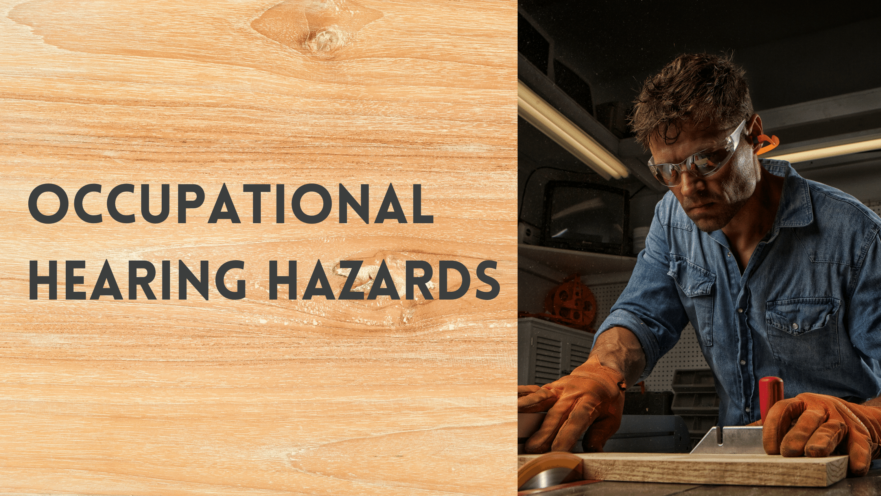Occupational hearing hazards are a significant way people develop hearing loss, one of the most common medical conditions today. Nearly 1 in 5 people have some degree of hearing loss in one or both ears, making impaired hearing a public health epidemic. Exposure to loud noise is a major cause of impaired hearing, commonly referred to as noise induced hearing loss. One of the places that people are likely to experience increased levels of noise is in the workplace. In fact, the CDC estimates that 24% of hearing loss is caused by occupational hearing hazards.
Occupational Hearing Hazards
Occupational hearing hazards refer to potentially dangerous materials or sources that can harm hearing health. The two common hazards are:
- Loud noise: one time or consistent absorption of loud noise can damage hearing. Operating heavy machinery, construction sites, entertainment venues etc. are common work environments that produce excessive noise.
- Ototoxic chemicals: includes carbon monoxide, metals, and hydrogen cyanide which can harm parts of the auditory system that contributes to how we hear.
According to the Centers for Disease Control and Prevention (CDC):
- 10 million people are exposed to solvents and other ototoxic chemicals at work
- Nearly 30 million people are exposed to dangerous levels of noise in the workplace
- 12% of the working population has hearing difficulties
- 8% experiences tinnitus which is a ringing or buzzing like noise in the ears and is one of the most common symptoms of hearing loss
Being exposed to these hazards increases the risk of developing hearing loss, a permanent medical condition that can significantly affect a person’s ability to navigate daily life with ease.
Noise Induced Hearing Loss
Sound is measured in units known as decibels (dB) and noise above 85dB is considered dangerous for hearing health. This is the equivalent of busy city traffic, hair dryer, or vacuum cleaner which hearing health experts consider loud. Typically, people can be exposed to noise at 85dB for a maximum of 8 hour per day without significant risk. As noise increases beyond this, so does the risk to hearing health. According to the Occupational Health and Safety Administration (OSHA), safe exposure to noise above 85dB should be cut in half for every 3 decibels increase:
- 85dB: 8 hours
- 88dB: 4 hours
- 91dB: 2 hours
- 94dB: 30min
One time or consistent exposure to loud noise can damage the hair cells in the inner ear. These hair cells help translate soundwaves into electrical signals that are then sent to the brain to further process which is how we are able to understand what we hear. There are thousands of hair cells in the ear that are activated in response to absorbing sound waves. The louder the sound waves, the more intense the movement of these hair cells are. They require time to rest and recover which prevent them from being overworked and losing sensitivity. But if the exposure is consistent (or infrequent but extremely high levels), then these hair cells can die. Unlike other types of cells, hair cells in the inner ear do not regenerate which means that this damage is permanent; resulting in hearing loss.
Protecting Hearing Health
Noise induced hearing loss is preventable! By practicing safety measures as you navigate occupational hearing hazards, you can reduce your risk of damaging your hearing. A few useful tips include:
- Wear protective gear: this includes earmuffs, earplugs, and headphones which reduces the impact of loud noise.
- Measure workplace volume: knowing the volume in your workplace is useful because you are able to adjust your exposure time. You can identify noise levels by downloading and using an app which actually measures the decibels in the environment you are in!
- Workplace Accommodations: be sure to know about your rights in the workplace. Employers are required to mitigate hazards and provide hearing protection (and other accommodations). If you have hearing loss, there is a range of workplace accommodations that you can access to create a more accessible (and safe) working environment that meets your hearing needs.
In addition to these tips, it is important to have your hearing tested regularly. This is a great way to be proactive about your hearing health!

